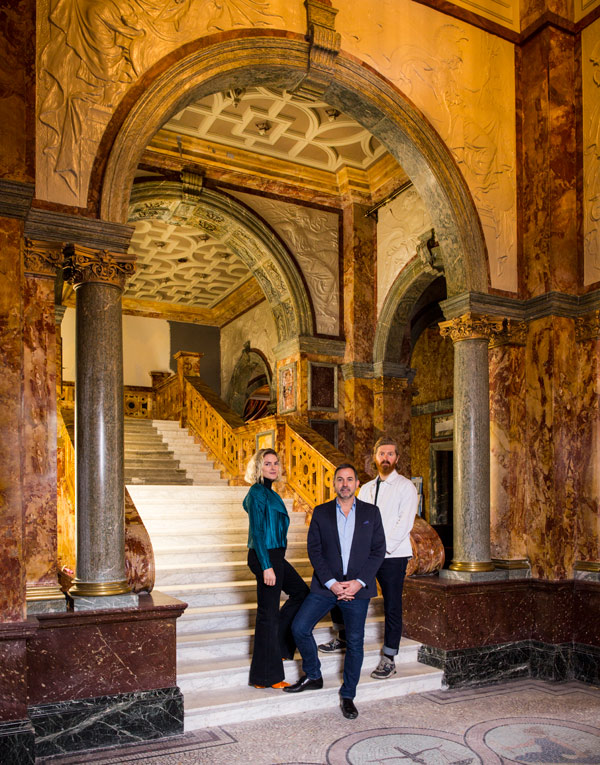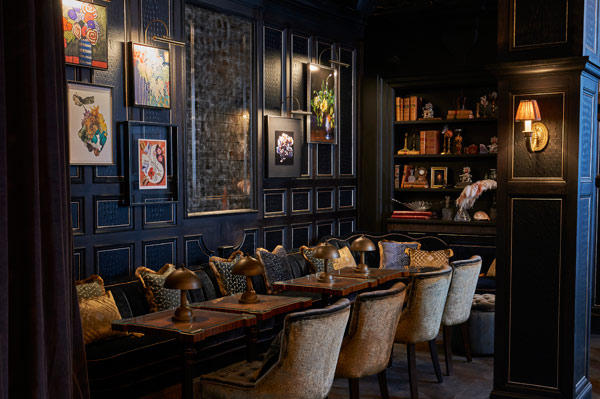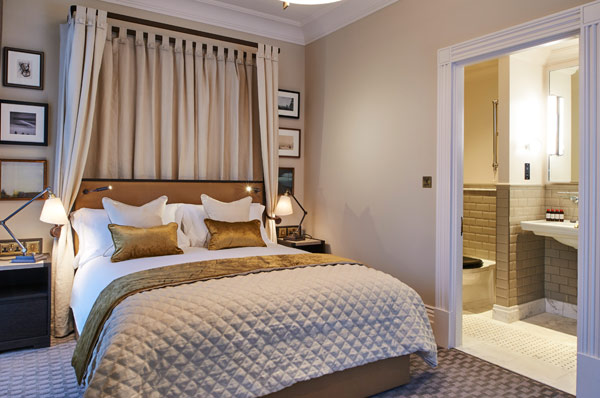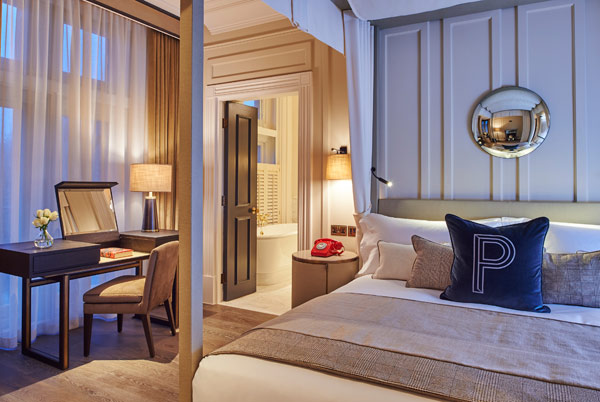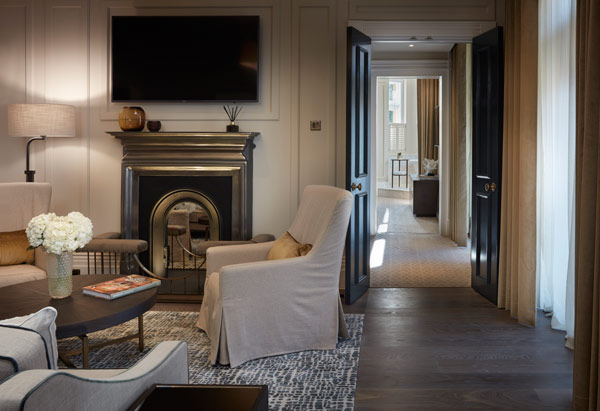The Principal London: a hotel for the new Bloomsbury Set
Starwood Capital Group will launch its flagship Principal hotel in Russell Square next week, after an £85m refurbishment. Rosalind Mullen finds out what London's latest luxury hotel is bringing to the market
Well, that's all changed. More than two years of building works and an £85m facelift later, the newly christened Principal London has emerged looking more like its beautiful, original self.
Principal's owner, US private investment company Starwood Capital Group, has painstakingly restored the Grade II-listed hotel, with a generous layering of 21st-century facilities and contemporary luxury on top.
Although several punchy five-star hotels will be launching within iconic buildings across the capital in the next few years - including Raffles in the War Office and Rosewood in the former US embassy - chief operating officer David Taylor is confident that Principal London has an advantage in the market.
"It is one of the last grande-dame hotels in London to be restored to its former glory," he says. "Rich in history and built to a standard and a specification that's simply unaffordable in London these days, it will offer something unique given the variety of restaurants and bars and the high specification of the guest rooms and suites."
Its location in Bloomsbury should help, too. It sits at the heart of a triangle linking the rejuvenated King's Cross to the north, Clerkenwell and the City to the east and Covent Garden and the West End to the west. Plus, the British Museum is just around the corner, with six million visitors a year, and there are world-class universities and medical facilities nearby.
"There's something fabulous about Bloomsbury," says Taylor. "It's like the Garment District in New York before Ace and the Nomad opened - central, but off the radar."
e restoration was overseen by EPR Architects. Notably, they have reopened the void in the restored marble entrance by taking out the modern mezzanine offices to create a light-filled double-height space. The original listed marble flooring was repaired with bespoke tiles from Italy, while some 6km of plaster moulding replicates the original - and apparently, you could tile four tennis courts with the Royal Doulton thé-au-lait terracotta stone needed to repair the exterior.
The in-house design team, headed by Laura Hopkinson, worked closely with lead interior designers Tara Bernerd & Partners on the luxurious Palm Court, guest rooms and public areas, while Russell Sage Studio was responsible for the eclectic Neptune restaurant, Fitz's cocktail bar and the Burr & Co café and bar.
Initially launched in the Principal Edinburgh George Street hotel, Burr & Co is the brand's café concept, which also offers beer and wine on tap. Gorgeous Group helped work up the food and beverage concepts and Starwood Capital's chief executive Barry Sternlicht waded in with creative direction.
"The main brief was to retain the architecture, bring integrity back and transform the hotel," says Hopkinson.
There was also a remit to understand the locality and its history, with a nod to the artistic Bloomsbury Set of yesteryear and to reimagine it for the 20th century. As Bernerd explains: "We wanted to embrace the community - hospitals, artists, students - they are the new Bloomsbury Set."
Happily, the vast ground floor has allowed for the creation of varied bars and restaurants appealing to locals, guests, different markets or even different moods - all with street access.
"Each space is different," says Hopkinson. "Burr & Co is come-as-you-are, with lots of sockets and workspaces, pared back to its original panelling with a wooden floor and quirky accessories. It's for younger customers - maybe students coming in for a reasonably priced coffee. Fitz's is all about glamour, sparkling under the glitter ball (see panel). Banquettes are rich velvets and there are glamorous sofas. Neptune is vibrant, cool, with apricot walls (see panel). It is an energising room; it's fun, with a retro-cool theme for a cool crowd. Palm Court is elegant and sophisticated, calming. Perhaps for an older crowd."
e building's layout was reconfigured to bring back the Palm Court, but the 80- to 90-seat space won't be finished until June. It promises a living wall of plants in an outdoor terrace at one end and a winter garden with a cleverly lit glass ceiling at the other. Interior designer Bernerd has avoided an olde worlde style, yet introduced warm touches with wicker chairs and a double-sided fireplace, limestone flagstones, bolster cushions and custom-made iron tables to give a courtyard feeling. The space is designed to transform from day to night, coffee to cocktails.
The bedroom count has been cut from 400 to 334, which allows for roomier than average bathrooms. Room types range from the two-bedroom Principal Suite and 39 suites through to guest rooms and city singles. In-room amenities include Ruark music systems and the Perfumer's Story toiletries from Azzi Glasser. Quirky touches include a roll-top bath in the turrets of the corner suites opposite the four-poster bed, which adds a classic feel.
Hopkinson describes the rooms as: "Calming and cool, but also cosy - a home from home. Not corporate. The colour schemes are neutral, but there are added depths of colour with plum and aubergine, and some rooms are deep navy."
Working alongside the designers and architects was brand director Simon Willis, whose challenge was to "layer the design] to make it a Principal hotel - to create a hotel that celebrated British heritage, with a fresh, relevant spirit."
Heritage is the cornerstone of Principal's 10 hotels in eight cities because, while it sets out to create individual properties that reflect their environments, brand identity is crucial, too. For instance, Principal Edinburgh Charlotte Square in Georgian townhouses has a residential, private feel, while Manchester, in the former Refuge Assurance Company HQ, is raw and quirky with a swagger in its step. But they are all part of the same family.
This comes across subtly with the signature pops of red in the portfolio's in-room telephones and vintage lobby postboxes. And all staff are trained in professional informality.
Core brand values also embrace generosity. So a shop in all hotel lobbies sells nibbles and necessities at a fair price, and instead of minibars, each room has a complementary tuckbox with, in London's case, British favourites such as crisps, chocolate, tea and coffee - all aimed at making guests feel at home.
And it is also attractive to the international market. "People like points of difference that say something about the country. It's not just a brand," adds Willis. "It's not slavish Britishness, but it celebrates the national identity. Our focus groups relaxed when they saw we didn't have Union Jacks and so on."
As the company flagship, London is expected to generate an awareness of the brand across the UK and internationally. To hit the ground running, general manager Paul Walters has launched the hotel with a room rate of £225 for a double, about £100 less than competitors.
Fitz's cocktail bar Fitz's, set across two rooms, is all about velvet chairs, leather, dark walls, mirrors, glamour and a scene-stealing glitterball. It's a salon for the 21st century and a nod to the Bloomsbury Set, thanks to the input of Gorgeous Group founder Robbie Bargh.
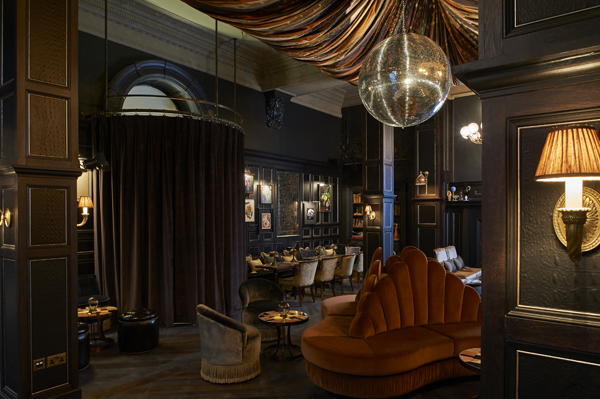
The Neptune restaurant Designed by Russell Sage Studio, Neptune's unexpected salmon-coloured walls are offset by green velvet banquettes, orange-red chairs and a lack of pretension. As with all Principal hotels, this is no ordinary hotel restaurant and it's as much for the locals as for the guests. Behind the concept are colourful restaurant entrepreneurs chef Brett Redman and front of house star Margaret Crow, who run Elliot's in London's Borough Market and previously operated the Richmond gastropub in Hackney. They realised when working up the Neptune concept that their ideals for "a great local place - a casual, cool environment with great music" haven't changed. So they shut the pub to concentrate on enhancing their vision.
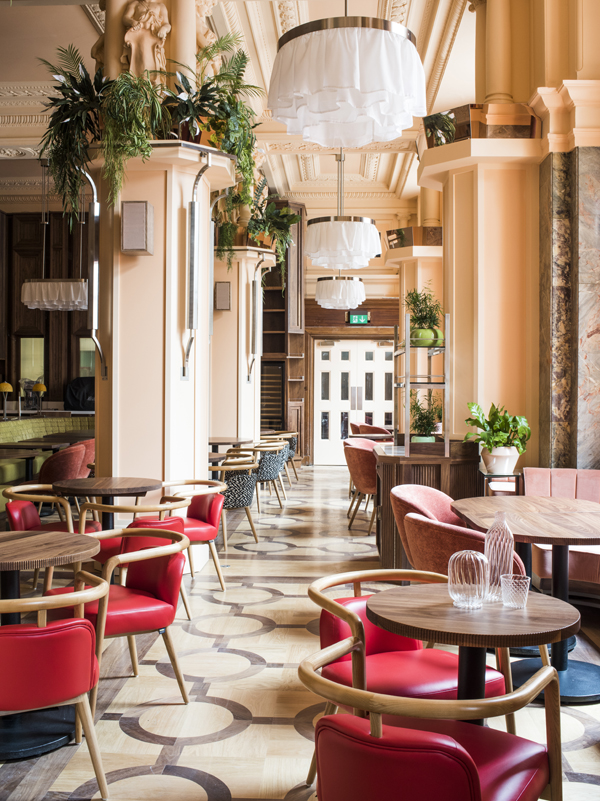
The foundations of the Principal Hotel Company1984 Principal Hotels launches 1994 Tony Troy leads a management buy-out of the group, which 13 years later becomes the Principal Hayley Group 1999 Troy buys the hotel that is now Principal London from Granada for £60m 2013 American private investment firm Starwood Capital Group buys Principal Hayley Group's 22 four-star hotels for £365m, De Vere Venues for £231m, Four Pillars for £90m and two hotels in Scotland 2016 Starwood consolidates the group and creates two brands under Principal Hotel Company - Principal, which embraces the city hotels, and De Vere, the country house division. The companyChief executive Tony Troy Chief operating officer David Taylor Brand director Simon Willis The hotels Principal London, Principal Manchester; Principal St David's; Principal Edinburgh Charlotte Square; Principal Edinburgh George Street; Principal York; Principal Glasgow Blythswood Square; Principal Grand Central Hotel; Principal Met (Leeds); and Principal Oxford Spires In the pipeline Principal Birmingham and Principal Liverpool [Get The Caterer every week on your smartphone, tablet, or even in good old-fashioned hard copy (or all three!).
Continue reading
You need to be a premium member to view this. Subscribe from just 99p per week.
Already subscribed? Log In



